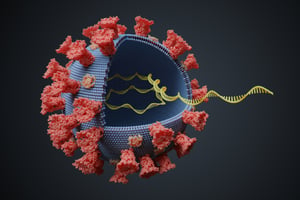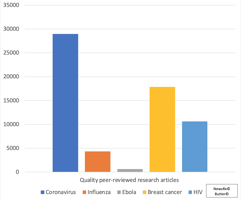The coronavirus pandemic is pushing the bounds of science and technology. The speed and efficacy of...
Seven Ways AI Can Help Fight Climate Change
←Back to resources
American CO2 emissions are currently on track to fall just 15% below 2005 levels by 2025—not nearly enough to address our climate crisis or meet the 2015 Paris Agreement commitments. Climate change is on track to create hundreds of millions of refugees by 2050, while making agriculture untenable in equatorial regions and wiping out most of the life on the planet.

Although the American government and governments around the world can do a lot more to address our current climate crisis, the burgeoning development of AI technology is becoming an unlikely ally. With a global market for AI expected to exceed $169 billion by 2025, new and powerful technology has an essential role to play in mitigating the climate crisis. Here are 7 ways that AI can help fight climate change.
Create more efficient energy grids
Machine learning and AI can be used to increase the efficiency of green energy systems, including those for wind and solar power. Used in wind turbines, AI can incorporate real-time weather data to adjust to the conditions and generate more power.
Machine learning can also help companies figure out when energy demand on the grid peaks to optimize the entire system and use more renewable resources.
Individual homeowners can even install smart thermostats, which can save up to 15% on cooling annually. Machine learning and AI has the capacity to learn schedules and habits and incorporate weather data to set the optimum daily output.
Forecast and prepare communities for extreme weather
AI systems are able to capture minute details of the climate system, such as atmospheric and ocean chemistry, into weather-prediction models. As our world’s weather grows more unpredictable, AI models will counter with greater accuracy. AI will capture small but essential details such as trees that have overgrown powerlines and could potentially cause power outages in a storm.
These powerful models will help communities preempt and respond to extreme weather events, such as floods, hurricanes, and droughts.
Track deforestation
.jpeg?width=777&height=518&name=Splitting%20axe%2c%20wrapped%20in%20black%20tape%2c%20with%20its%20blade%20stuck%20in%20cylindrical%20log%20section%20cut%20by%20power%20saw%2c%20for%20themes%20of%20manual%20labor%20and%20automation%20(selective%20focus).jpeg)
Deforestation hurts communities and contributes to global warming, but normally, tracking illegal deforestation requires on-the-ground scientists. AI can change that. With AI satellite imagery and algorithms that detect chainsaw sounds, computer models can observe and calculate tree loss and notify local law enforcement.
Optimize the supply chain
Global shipping, by ground, air, and sea emits a massive 17% of worldwide greenhouse gas emissions. Improving the efficiency of our freight and transportation systems is a major strategy to fight climate change.
AI and machine learning can help by changing the way goods around the world are shipped. A distribution system calculated by machine learning that lumps large shipments together and minimizes the total number of trips can help cut down on GHG emissions as well.
Make coral reefs resilient

Coral reef systems are incredibly sensitive to climate change and the reefs of the Caribbean are already by-and-large wiped out. An initiative called 50 Reefs is using AI to identify strands of climate-resistant corals that can withstand increased ocean temperatures. If we can put special effort into protecting these new strands of corals, our reefs just might stand a chance to make it into the next century.
Help create climate change-resistant agriculture
Climate change has a significant impact on the world’s agriculture and could make agriculture nearly untenable in many equatorial climates. One possible solution is to use genetically modified crops that are climate- and disease-resistant. AI can help develop and protect these GMOs by analyzing the enormously complex matrix of climate and agricultural data to accurately determine out the weather conditions genetically modified crops need to be able to resist. For those opposed to GMOs, this data could also be used to determine which non-genetically modified crops can resist future climate conditions.
Calculate more accurate climate models
A common thread throughout this list is AI’s ability to process complex datasets. The Earth’s climate is a messy system, and humanity’s ability to adapt to our climate crisis demands accurate models—not just for changing weather patterns but also of the overall climate outcomes of the world’s GHG emissions.
Right now, a range of scientific models predicts anywhere between three and ten degrees Fahrenheit of warming by 2100. It’s almost impossible to adapt to such a wide range of outcomes, and even harder to predict what the different effects on the Earth’s ecosystems and human societies will be. The fight against the climate crisis starts with more accurate climate modeling—and that becomes possible with AI. The Cloud Brain at the University of California Irvine is one such AI climate model, able to calculate climate shifts at a more precise scale than ever before.
AI may very well become a valuable ally in the global struggle to combat climate change. But it would be foolish to rely on still-developing technology without also implementing strong policy and taking aggressive individual and corporate action.
One of the great uncertainties of climate change is human adaptivity. Will we successfully adapt to a changing world? Or will we only change at the cost of many human lives? We should turn to future technology while taking the action we can today. AI can be a boon, but not a savior.

.jpg?width=50&name=DSC_0028%20(1).jpg)


